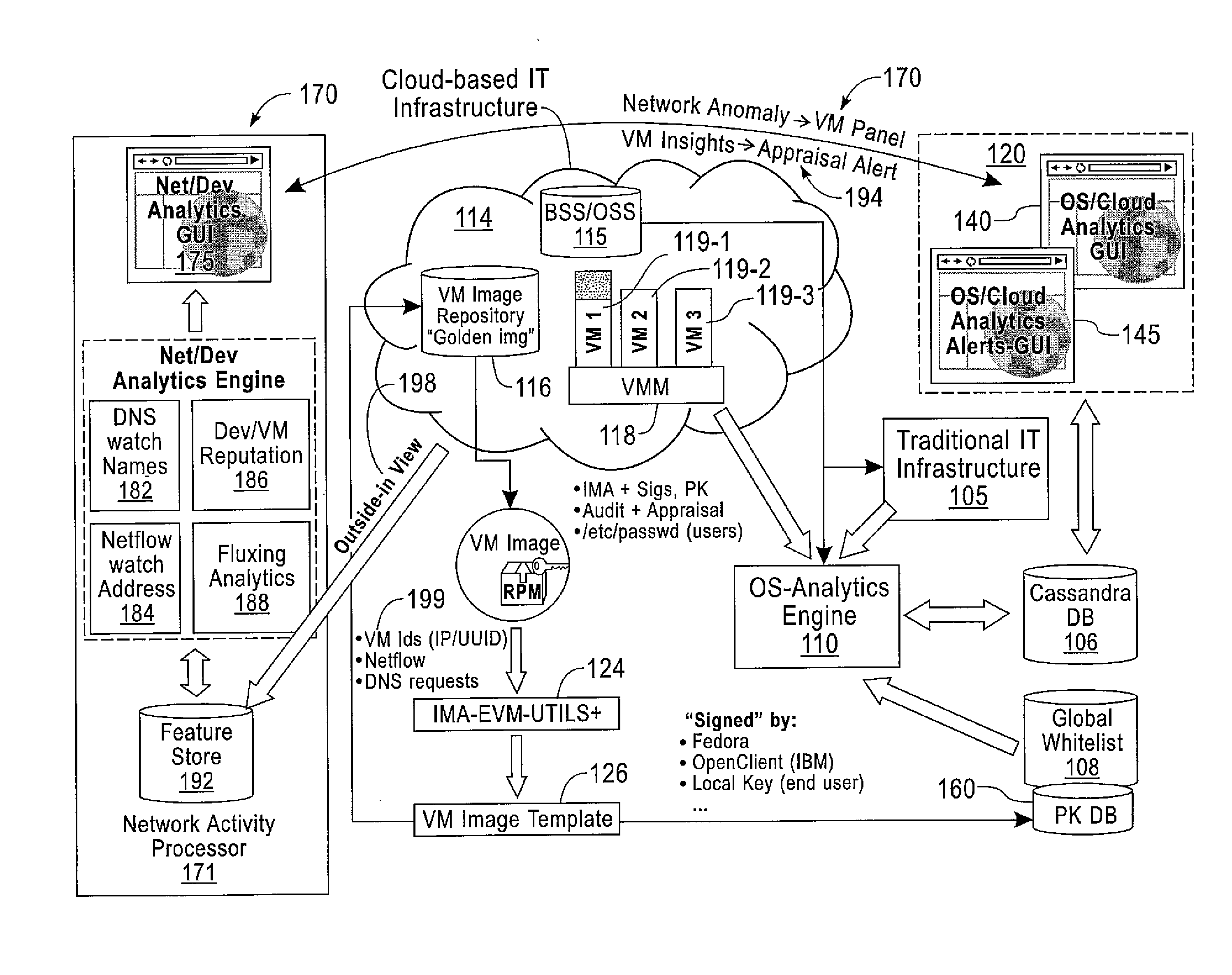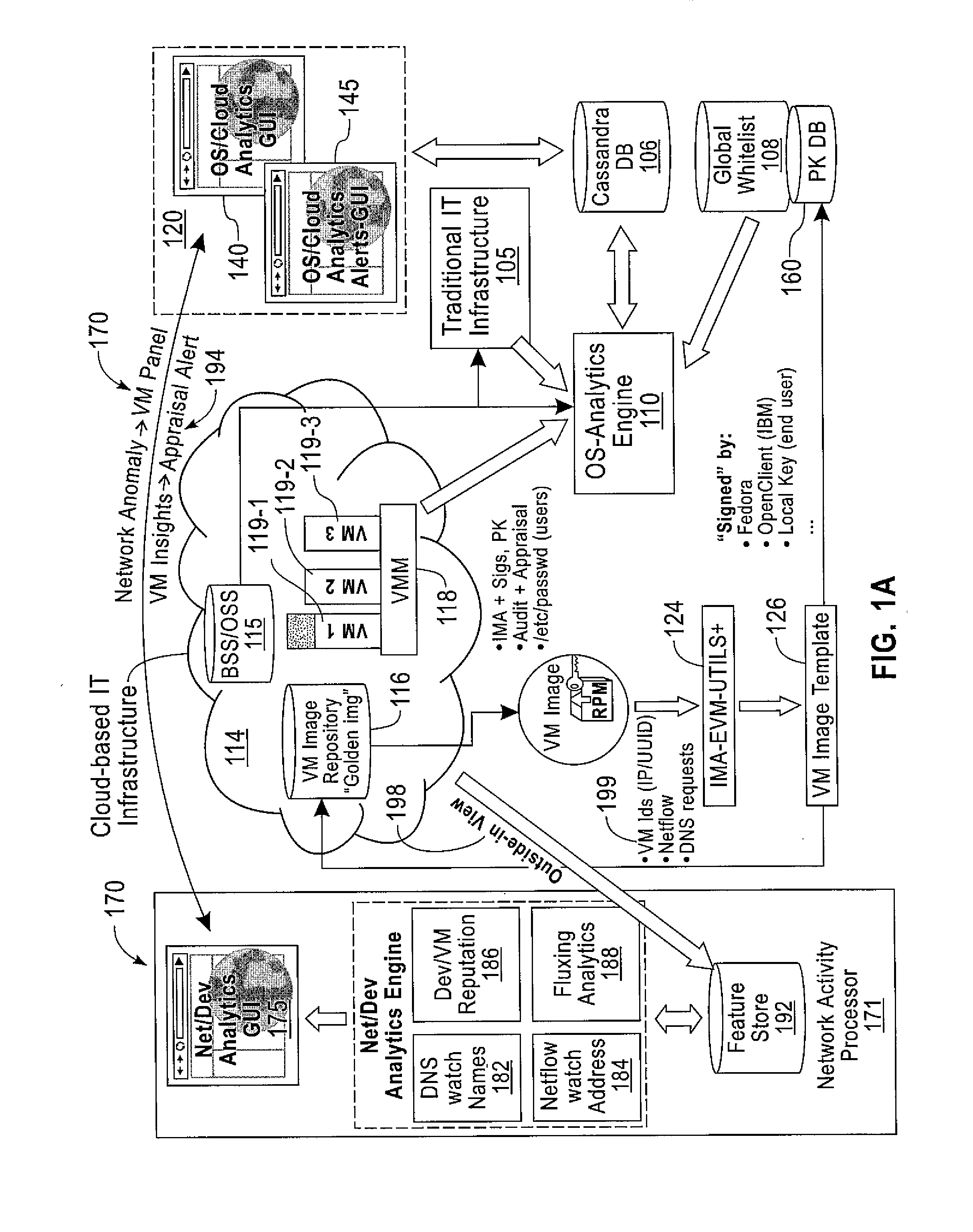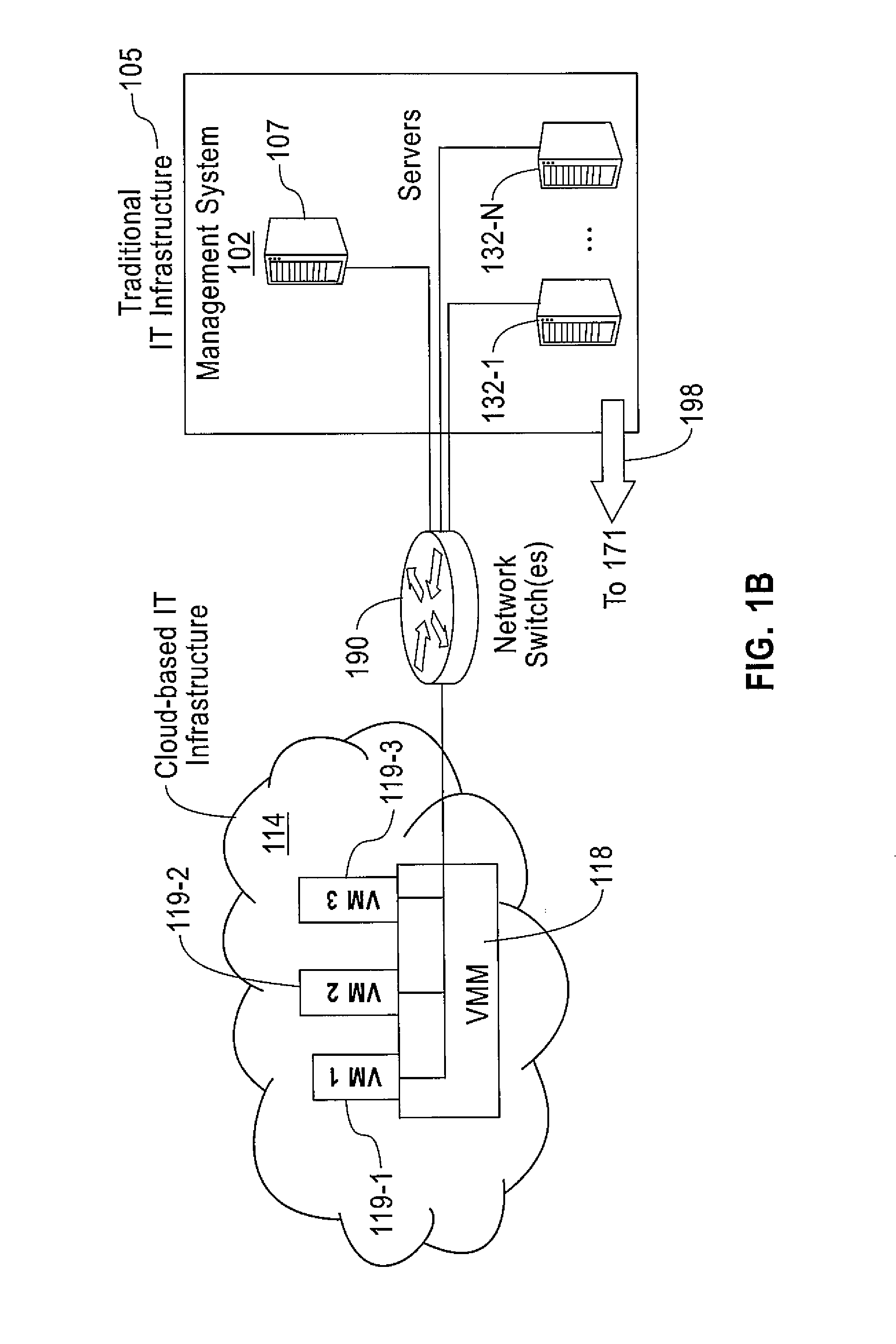Computer Implemented Techniques for Detecting, Investigating and Remediating Security Violations to IT Infrastructure
a technology of security violations and computer implementation, applied in the field of detecting, investigating and remediating security violations to it (information technology) infrastructure, can solve problems such as program vulnerability exploited, process that started from executable files that are deemed authentic may exhibit suspicious behavior, and modify or replace critical software components
- Summary
- Abstract
- Description
- Claims
- Application Information
AI Technical Summary
Benefits of technology
Problems solved by technology
Method used
Image
Examples
Embodiment Construction
[0029]Exemplary embodiments of the invention may comprise two levels on which malicious behavior is detected and may combine two separate views (instrumentation) of computer systems.
[0030]First, detection may be performed both on a per-system level and a combined population level. On the per-system level, the behavior of every system may be analyzed independently and compared against baseline patterns and models learned in the past. On the population level, behaviors of all active systems may be analyzed in a combined fashion to identify conditions that indicate the presence of malicious or suspicious activity on the multiple systems. Moreover, this level enables predictive threat detection; if, for some system, suspicious activity has been identified that has led to a malicious condition on another system in the past, the newly suspicious system can be treated before the malicious condition arises.
[0031]Second, the invention may combine two layers of instrumentation and monitoring ...
PUM
 Login to View More
Login to View More Abstract
Description
Claims
Application Information
 Login to View More
Login to View More - R&D
- Intellectual Property
- Life Sciences
- Materials
- Tech Scout
- Unparalleled Data Quality
- Higher Quality Content
- 60% Fewer Hallucinations
Browse by: Latest US Patents, China's latest patents, Technical Efficacy Thesaurus, Application Domain, Technology Topic, Popular Technical Reports.
© 2025 PatSnap. All rights reserved.Legal|Privacy policy|Modern Slavery Act Transparency Statement|Sitemap|About US| Contact US: help@patsnap.com



